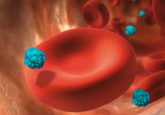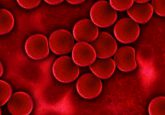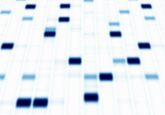Nanofiber sensors can detect disease biomarkers in exhaled breath

Researchers at the Korea Advanced Institute of Science and Technology (KAIST; Daejeon, South Korea) have developed advanced methods of disease diagnosis utilizing exhaled breath analysis. The research team, led by Il-Doo Kim (KAIST), intends to produce ultrasensitive and highly selective gas sensors based on semiconductor metal oxide-based nanofiber sensor arrays, which are optimized for pattern recognition of breath prints.
The findings were recently published in the peer-reviewed journal Small.
Human breath contains a number of volatile organic compounds (VOCs), such as acetone, H2S ammonia and toluene. Analysis of the VOC concentration in exhaled breath, originating from the molecular exchange between lung tissue and blood, can aid early diagnosis of various diseases. For example, diabetes, halitosis, kidney malfunction and lung cancer are diseases that can be evaluated by the measurement of VOCs, utilizing variations in the concentration of exhaled VOCs as disease biomarkers.
The non-invasive nature of exhaled breath analysis is the key advantage over traditional diagnostic methods such MRI, CT, blood test, endoscopy and X-ray. Researchers hope that in the future, these assays will enable accurate diagnosis in the early stages of diseases to aid prognosis.
Multi-sensor arrays with nanostructured semiconductor metal oxides are essential for developing inexpensive and simple diagnostic tools for examining the VOC concentration in exhaled breath. The research team has been developing an array of breathing sensors utilizing this technology, which it is hoped will offer patients a real-time disease diagnosis.
One key advantage of the sensor arrays is their use of gas adsorption, leading to large resistance changes achieved by a highly specific surface area and porous nanostructure. Highly selective biomarker detection was accomplished by the functionalization of diverse noble metallic catalysts such as Au, Pt, Pd and Rh, which are essential for establishing multiple sensor arrays for analysis of breath prints.
Furthermore, these sensor arrays can be integrated with smartphones, wearable electronic devices and medical devices for real-time monitoring of physical conditions.
Additionally, the sensor platform can be utilized both in the field of disease diagnosis and indoor/outdoor air quality control.
Kim commented: “We believe that there can be many ways to incorporate our technology based on the particular needs of industries, not just in the field of medical devices. Another use for the technology could be in the detection of hazardous chemicals or gases at manufacturing factories.”
Sources: Choi S, Kim S, Cho H et al. WO3 nanofiber-based biomarker detectors enabled by protein-encapsulated catalyst self-assembled on polystyrene colloid templates. Small 12(7) 911–20 doi: 10.1002/smll.201502905 (2016); Korea Advanced Institute of Science and Technology press release via ResearchSea.






